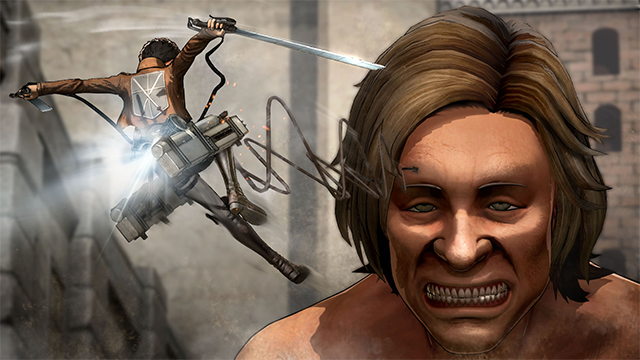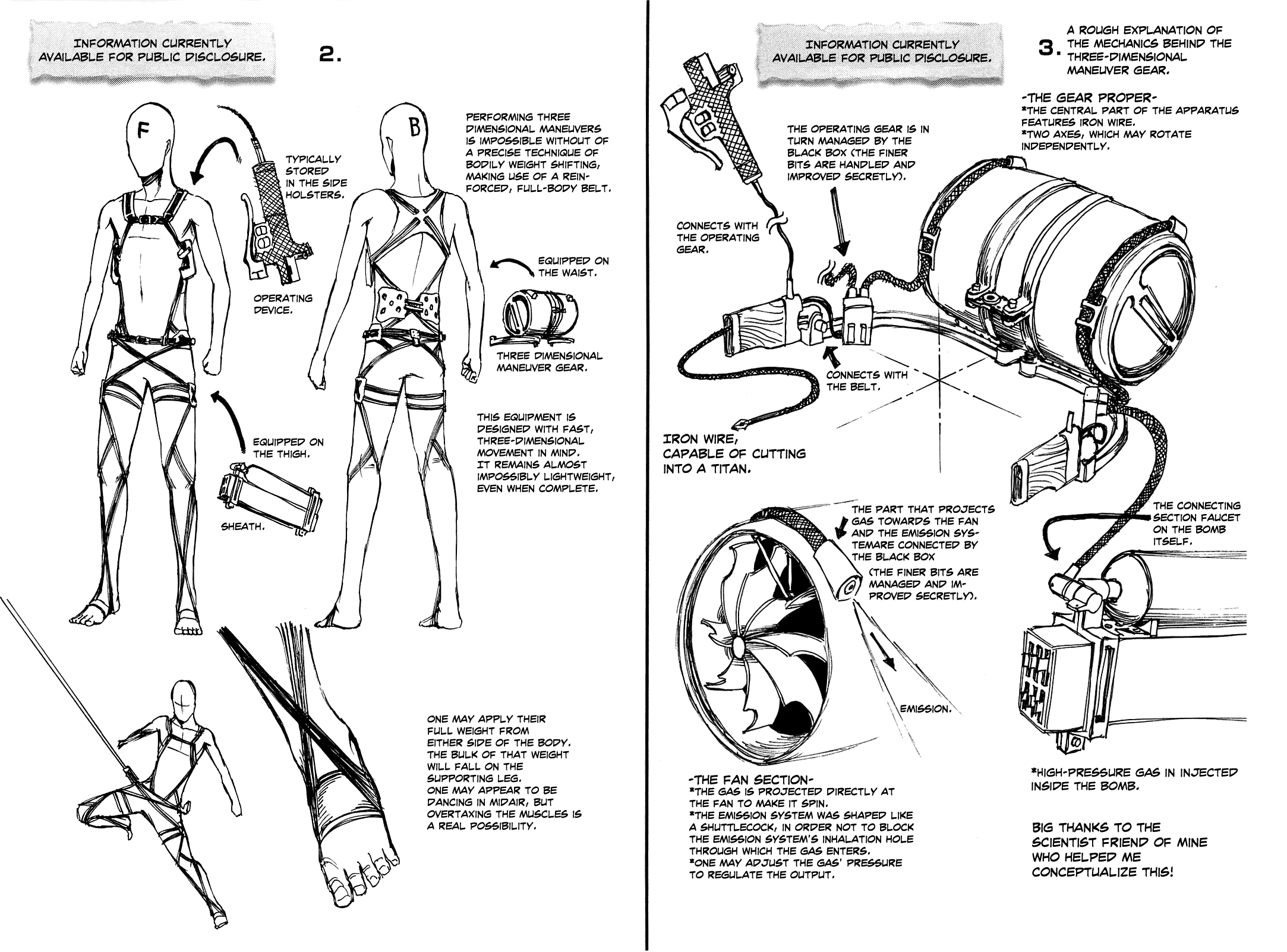If you have know nothing about Attack on Titan the manga, then the video game subtitled Wings of Freedom will not really mean much to you. It’s a serviceable game at best. However, if you are an AoT fan, then you will likely eat this game up because it’s a fairly spot-on representation of the battles in the anime series and comic. The majority of the game is skirting across rooftops and slicing the back of Titan’s necks with the swords attached to your 3D maneuver gear. I’m kind of reminded of some of the Spider-man games that allow you to swing from building to building in New York City.
Of course, I over analysed the game’s science because that’s what I do. And the apparent lack of physics made me cringe, but the jumping around and sticking to walls appeared to be based on something. In other words, someone tried to put some science behind the mechanics you see in the comic and in the video game. Unfortunately, there are two items that really rub me wrong and they both have to do with the 3D maneuver gear. So let’s take a look at this central piece of equipment when we science the shit out of Attack on Titan: Wings of Freedom.
How the gear works
The 3D maneuver gear consists of five different components. The controls sit in the hilt of the swords which have replaceable blades sitting on the sheath on either hip. Sitting on the multi-blade sheaths are gas canisters, which are the central power elements for the gear. The canisters feed into grappling hook launchers, which also sit on the hips, just above the sheaths. Around the back is a fan device that is also fed by the canisters. It is used to move the wielder from side to side or help propel them forward.
The titan-fighters aim their hips in the direction they would like for the hooks to fire, which attach to the stone walls or other generally immobile object. The propulsion system is a gas compressed in a canister. When the gas is released it fires the grapple. This grapple has to bury itself deep enough to pull a 70 kg human up into the air.
A real-world analog
The first real-world analogy that I could come up with was a pneumatic harpoon gun. This has an effective range of about 4 m; far less what is necessary to fling the grapple the hundreds of meters that it needs to go to attach to the tops of buildings and titans. But perhaps if there were charts regarding its effective range, then I could extrapolate the necessary pascals to push the AoT grappling hooks an effective distance. Unfortunately, I could find nothing. I guess when you have such a short effective range in the first place, you’re not exactly concerned with a few more centimeters.
There are charts for crossbows effective range and many, many charts for rifles. But I couldn’t use a rifle or crossbow as an analog because they don’t use compressed air as the propellant. I was discussing my dilemma with a friend who works at a sporting goods store. At first he was unsure what would be an effective analog, but then he mentioned pellet guns.

As it turns out, pellet guns have come a long way since my childhood when they were more or less a toy for little kids to play with. Pellet guns use compressed air to fire a pellet a couple hundred meters towards its intended target. And in 2008, a couple of American students did an experiment involving pellet velocity and canister pressure. (Sorry, the rest of the world, but they used PSI, which is pounds per square inch, not pascals.)
Thankfully, we know what the effective velocity is to penetrate concrete because construction workers do it all the time. The most common tool for a general contractor is a hammer shot. This tool actually uses a .22 caliber blank to fire a nail into concrete. And thanks to my article on DOOM weapons, I’ve already done the research on the power of a 22.

Let’s apply the science
A .22 caliber rifle fires a bullet at 370 m/s at its slowest, so we will need at least that velocity in order to penetrate the stone of the buildings, although that’s still likely going to be too slow, but we will start there. If we have to do any more maths beyond that, then we will. I have a feeling that we will not have to.
According to the 2008 experiment, the average velocity of a pellet at 100 psi is 58.09 m/s. The students then incrementally increased the psi until they reached 500 psi. At that point, the velocity almost doubled: 108.87 m/s. We can use this information to calculate the psi needed to get our 370 m/s. At those diminishing returns, you will need nearly 8,000 psi before a pellet will hit the velocity that you will need to penetrate concrete deep enough at close range. It will take more than that to do it from a distance. Scuba gear is only rated at 4,100 psi max before the value explodes.
If you watched the Superhero Hour episode of Mythbusters, Adam Savage had a unique solution to the grappling hook issue. He propelled a hammer shot toward the wall with a spear gun. That might work in this case, but there is no indication from the lore that there is any mechanics or propellent at the hook end. So I cannot use that in my science. In other words, there is just no way this could come close to working.
That’s how I science the shit out of the 3D maneuver gear. What are your thoughts? Science isn’t science until theories are tested and retested. Let me know in the comments if you think this is possible.








Published: Sep 2, 2016 05:59 am